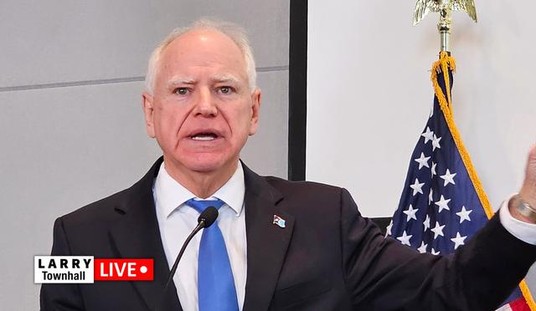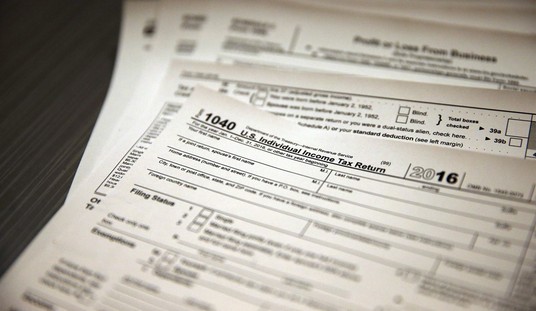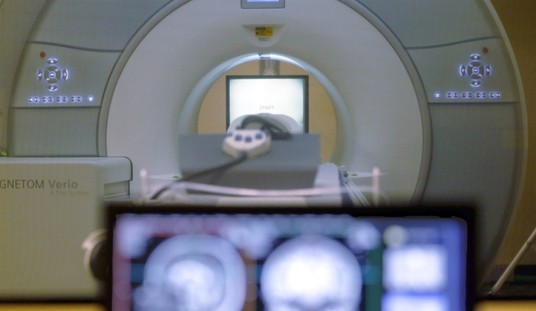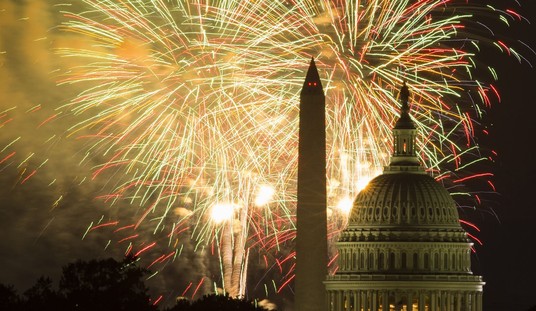The past three and a half weeks have not been kind to Donald Trump. Marco Rubio’s departure narrowed the Republican race to 3 candidates – realistically, two – and voters have turned their focus from the contest among the not-Trumps to the question of whether the party can or should nominate Trump. In the three states to hold a popular vote since March 15, Ted Cruz has beaten Trump 43.4% to 36.6% (with 13.2% for John Kasich) in the popular vote, and 76-64 in the delegate race. The offstage delegate race has been even worse: the Green Papers lists the tally so far from American Samoa, North Dakota, Colorado and Wyoming’s remaining delegates as 14 unpledged delegates supporting Cruz, 1 supporting Trump, 28 uncommitted and 48 yet to be awarded (a number of those starting today in Colorado, where Trump’s campaign is already all but conceding defeat).
The fight against Trump is not over, by a long shot, but it looks a lot more encouraging right now. Meanwhile, the picture on the Democratic side remains stable in terms of outcome – the superdelegate system ensures that Hillary Clinton will be the nominee – but the Bernie Sanders insurgency is actually gathering steam just as Trump’s is sucking wind.
Slipping Through His Tiny Fingers
Ted Cruz delivered a 13-point drubbing to Trump in Wisconsin – aside from lopsided votes in some territories or sparse caucuses like Wyoming where full popular votes weren’t released, Cruz’s 48.3% of the vote is the third-highest percentage of the vote in any state so far on the GOP side. He and Trump have now each won at least 45% of the vote in five states, but only Cruz in Utah has yet claimed a majority:
Utah: Cruz 69.2%
Massachusetts: Trump 49.3%
Wisconsin: Cruz 48.3%
Kansas: Cruz 48.2%
Mississippi: Trump 47.2%
Arizona: Trump 47.1%
Nevada: Trump 45.9%
Maine: Cruz 45.9%
Florida: Trump 45.4%
Idaho: Cruz 45.4%
Trump may yet crack the 50% ceiling in the next vote, in his home state of New York on April 19, but after the losses in Utah and Wisconsin, Trump’s share of the popular vote now sits around 37%, and he’s still got fewer than half of the delegates awarded so far, requiring him to pick up the pace the rest of the way:

What happens if nobody gets to 1,237 delegates before the convention? Trump may well lift his share of the popular vote from here on out, given the shift to the Northeast and the possibility that Kasich may fade further or drops out to create a true two-man race. But as of now, he has a smaller share of the popular vote than any candidate to win a major-party nomination since the 1976 advent of national popular primaries:

Of course, as Sean Trende and Jonah Goldberg have noted, American history didn’t begin in 1976; we’ve had a long tradition of contested conventions at which the candidate who led on the first ballot did not end up the nominee. While that’s obviously not an ideal situation for a political party these days, the fact that we are 32 states plus DC and 4 territories into the process and a solid 63% of the voters have voted against the frontrunner (including a majority in every one of those states, DC and Puerto Rico) is a pretty powerful argument for the legitimacy of the party rejecting Trump’s hostile takeover effort.
Justice Scalia, who was nothing if not a wise observer of political systems and actors, explained back in 2000 in California Democratic Party v. Jones (a decision striking down a “blanket primary” sterm and allowing closed primaries) why it is so crucial to political parties that they retain the ability to choose a nominee who actually represents the party’s views:
Representative democracy in any populous unit of governance is unimaginable without the ability of citizens to band together in promoting among the electorate candidates who espouse their political views. The formation of national political parties was almost concurrent with the formation of the Republic itself…In no area is the political association’s right to exclude more important than in the process of selecting its nominee. That process often determines the party’s positions on the most significant public policy issues of the day, and even when those positions are predetermined it is the nominee who becomes the party’s ambassador to the general electorate in winning it over to the party’s views…California’s blanket primary…forces political parties to associate with–to have their nominees, and hence their positions, determined by–those who, at best, have refused to affiliate with the party, and, at worst, have expressly affiliated with a rival…
The record…supports the obvious proposition that these substantial numbers of voters who help select the nominees of parties they have chosen not to join often have policy views that diverge from those of the party faithful…One expert went so far as to describe it as “inevitable [under Proposition 198] that parties will be forced in some circumstances to give their official designation to a candidate who’s not preferred by a majority or even plurality of party members.”…the Ninth Circuit cited testimony that the prospect of malicious crossover voting, or raiding, is slight, and…would be determinative in only a small number of races…But a single election in which the party nominee is selected by nonparty members could be enough to destroy the party. In the 1860 presidential election, if opponents of the fledgling Republican Party had been able to cause its nomination of a pro-slavery candidate in place of Abraham Lincoln, the coalition of intraparty factions forming behind him likely would have disintegrated, endangering the party’s survival and thwarting its effort to fill the vacuum left by the dissolution of the Whigs…Ordinarily, however, being saddled with an unwanted, and possibly antithetical, nominee would not destroy the party but severely transform it. “[R]egulating the identity of the parties’ leaders,” we have said, “may … color the parties’ message and interfere with the parties’ decisions as to the best means to promote that message.”…
…Even when the person favored by a majority of the party members prevails, he will have prevailed by taking somewhat different positions–and, should he be elected, will continue to take somewhat different positions in order to be renominated….[This] encourages candidates–and officeholders who hope to be renominated–to curry favor with persons whose views are more “centrist” than those of the party base. In effect, [the blanket primary] has simply moved the general election one step earlier in the process, at the expense of the parties’ ability to perform the “basic function” of choosing their own leaders…Nor can we accept the Court of Appeals’ contention that the burden imposed…is minor because petitioners are free to endorse and financially support the candidate of their choice in the primary…The ability of the party leadership to endorse a candidate is simply no substitute for the party members’ ability to choose their own nominee.
Meanwhile, as Trump sags, Bernie Sanders surges, and stands at 41% of the Democratic primary popular vote to Trump’s 37% of the (admittedly, larger) Republican vote:

While Trump would be the weakest nominee since 1976 – with less support in his own party than Romney or McCain or Dukakis or Mondale – Sanders would be only the second candidate in that period (after Reagan in 1976 and Hillary Clinton in 2008) to crack 40% of the popular vote and not win the nomination.
The strength of Sanders’ insurgency compared to Trump’s is even more striking when you look at the map of which states have seen a bigger Sanders than Trump vote (as a percentage of each party’s primary/caucus vote):

In the South, uniquely, the white working class is overwhelmingly found in the Republican Party, plus Sanders has fared poorly because the Democratic electorate is heavily black, and for various reasons he appeals less to establishment-minded, pro-Obama black voters. But otherwise, only in Massachusetts and Arizona has Trump outpolled Sanders.
The old rules, of course, are all out the door now. Nine states have voted for every Republican nominee since 1976; of the five to vote so far, Trump has won three (Florida, Illinois and Kentucky), Cruz one (Wisconsin) and Kasich one (Ohio).
Reading The Exits
Let’s take another walk, as I have after each round of voting, through what we can learn from the exit polls, a particularly interesting exercise here because Wisconsin is the first state to give us exit polls since Rubio’s departure (although Rubio was fading for most of the March 5-15 states). We begin with Ted Cruz’s bread-and-butter, the Evangelical Christian and “Very Conservative” voters:


Both of these groups have been core Cruz strengths from the outset, but you can see that the departure of Rubio has really given Cruz a stranglehold. Wisconsin is the second state (after Missouri) in which Cruz won an absolute majority of Evangelicals, and he won nearly two-thirds of “Very Conservative” voters, a group among whom has been winning majorities since March 8. And among the latter group, Trump failed to clear even 30% of the vote, while Kasich inherited none of Rubio’s support.
The flip side, first the non-Evangelical electorate, which is what most of the April 19 and 26 voters will be:

Trump remains status quo, but Cruz (aside from 31% in his home state of Texas) had not previously won as much as 30% of the non-Evangelical vote in any state; in Wisconsin he won 43%. That’s obviously the result of a couple of factors – consolidation of the anti-Trump vote, the particular dynamics of the Upper Midwest, the fact that Cruz had the backing of Scott Walker and Wisconsin talk radio and more time to campaign – but it adds up to a real leap forward for Cruz.

“Somewhat Conservative” voters were the heartland of Rubio’s support, and some of that support has gone over to Kasich, but the bulk is now going to Cruz, who again hit a new high by topping 40% of that vote for the first time (47%).

Moderates will never be Cruz’s best voter group, but as recently as Michigan he was drawing only 12% of them; in Wisconsin he won 29%, only the fourth state (after Texas, Mississippi and Missouri) in which he finished second among moderates. Again, we don’t see Trump so much weakening here as we see the anti-Trump vote lining up behind Cruz.

Voters without college degrees have been Trump’s most faithful supporters, reaching as high as 62% of them in Massachusetts. But in Wisconsin, Cruz won them by 10 points – he’s the only candidate to beat Trump with those voters, and this is only the fourth time (after Iowa, Texas and Oklahoma).

College-educated voters have tended to prefer Rubio or Kasich, and Cruz earlier in the campaign was scuffling with them; in Wisconsin he fell just shy of a majority at 48%.

By party self-identification, Trump’s 32% in Wisconsin tied South Carolina as his lowest outside of Texas and Iowa. By that metric, Cruz (who again had often trailed Rubio with Republicans through Super Tuesday) dominated, winning a clear majority at 54%.

Finally, independent voters, who have been a volatile group, as people go independent in different places for different reasons. These have been a strong group for Kasich, but Cruz hit another high in Wisconsin, tying Trump 40-40 to prevent Trump from making up for Cruz’s huge advantage among Republicans.
Finally, by time of decision, we see that Cruz is now closing very well, beating Trump by 18 points with late deciders, but we also see that Trump was in trouble all along in Wisconsin: it’s the first place outside of Cruz’s and Kasich’s home states where Trump did not win voters who made their minds up more than a week before the voting. That may suggest a little less enthusiasm about Cruz’s momentum, if voters in the Northeast are already more tilted towards Trump than Wisconsinites were.

The Hunt For Delegates

If we pull back and look at the fight for delegates, what we see is that a lot of the states ahead of us are actually two races, a statewide race and a district-by-district race: counting the non-bound district delegates in Pennsylvania, 406 of the 769 remaining delegates selected by the voters from today forward are elected by district-wide rather than statewide vote. That’s why Ted Cruz is campaigning in places like the Bronx, and also why statewide polling is going to be even less informative the rest of the way. But the places that have 50% thresholds for tipping to winner-take-all (New York statewide and by district, Connecticut statewide, and Washington by district) are the ones where the presence of Kasich might actually help Cruz, at least NY and CT (Cruz could easily wind up winning districts in Washington by a majority, while that’s unlikely in New York).
Ultimately, Trump is going to need to up his woo game with the unbound delegates, because without them he needs to win over two-thirds of the popularly-elected delegates (or 62.1% if you count in the Pennsylvania district delegates, who are popularly elected and some of whom are either openly supporting Trump or saying they’ll vote for whoever gets the most votes in their district.
What that also means is that the “winner take all” races are not quite what they’re cracked up to be – New Jersey delivers 51 delegates, but Nebraska’s 36 and Indiana’s 30 are the only remaining statewide delegate hauls above the twenties, independent of the district votes.
Ultimately, Wisconsin and Arizona were probably the last chance to effectively decide this race without a slog through the last votes on June 7, and the fact that Trump and Cruz each won one of the two states decisively prevented them from serving that function. Nate Cohn at the NY Times says Trump still has a path to 1,237 before the convention, but it depends on him not just dominating the Northeast but also winning Indiana and taking about 70% of the delegates in California, both of which now look like highly questionable assumptions given Cruz’s growing strength.
All of which means that, after Wisconsin, the odds that the nomination will be decided by a contested convention are very high. And that’s good news for anyone who wants to avoid the disaster of a Trump nomination.













Join the conversation as a VIP Member